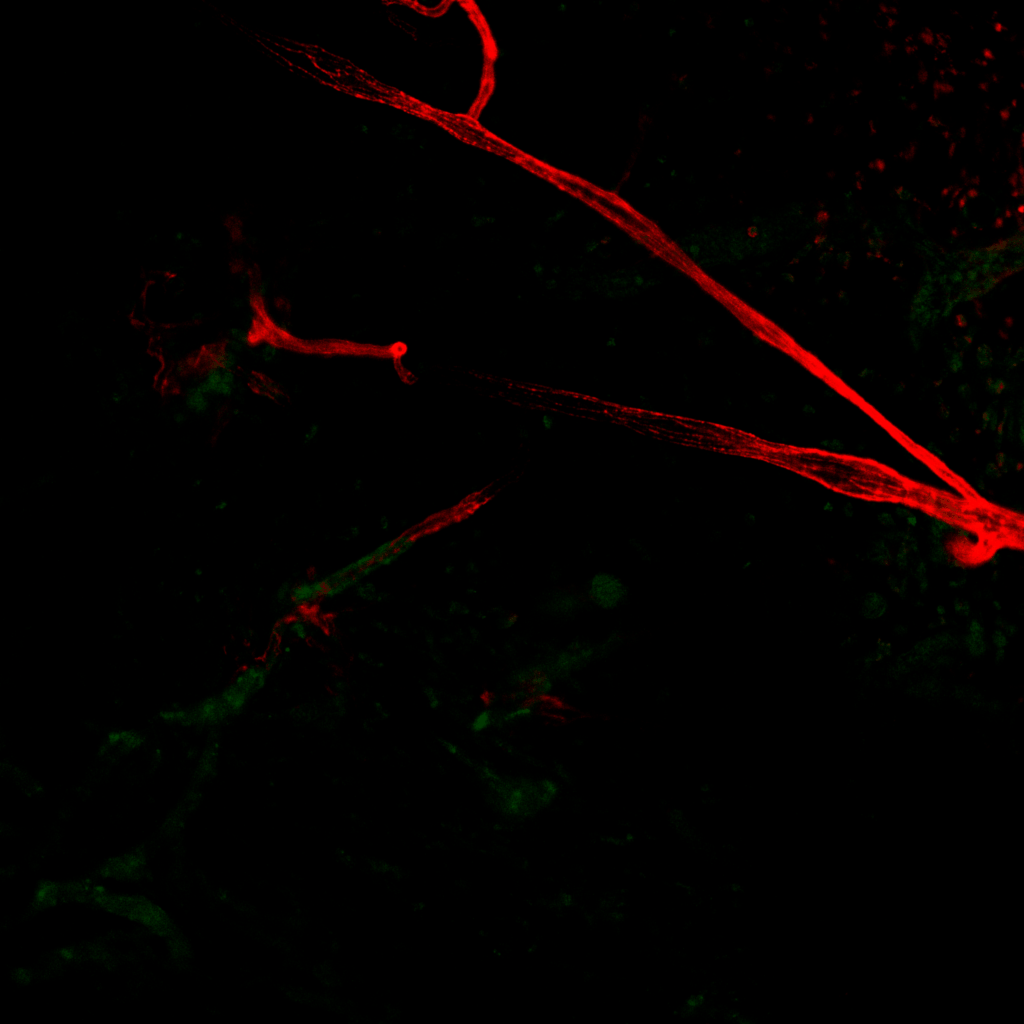Members
Project
Optical imaging techniques based on nonlinear effects of wave-matter interaction are increasingly applied in biology. In particular, multiphoton microscopy has the advantage of providing micrometric information with unrivaled imaging depth in living tissues, while preserving them from photo-toxic effects. In addition, the different sources of endogenous contrasts of biological tissues make it possible to visualize without labeling the two-photon excited fluorescence emission (TPEF) as well as the second harmonic generation (SHG) of molecules presenting a particular organization such as some collagens fibers or myosin. In addition, the advent of broadband sources and spectral detection in multiphoton microscopy now makes it possible to extend the range of fluorophores that can be imaged as easily as in conventional microscopy.
This tool is therefore perfectly suited to the study of phenomena that biologists wish to visualize in-situ or in-vivo, ie by intravital microscopy.
The IMAG'IC platform offers this imaging technique for direct imaging of small animals.













